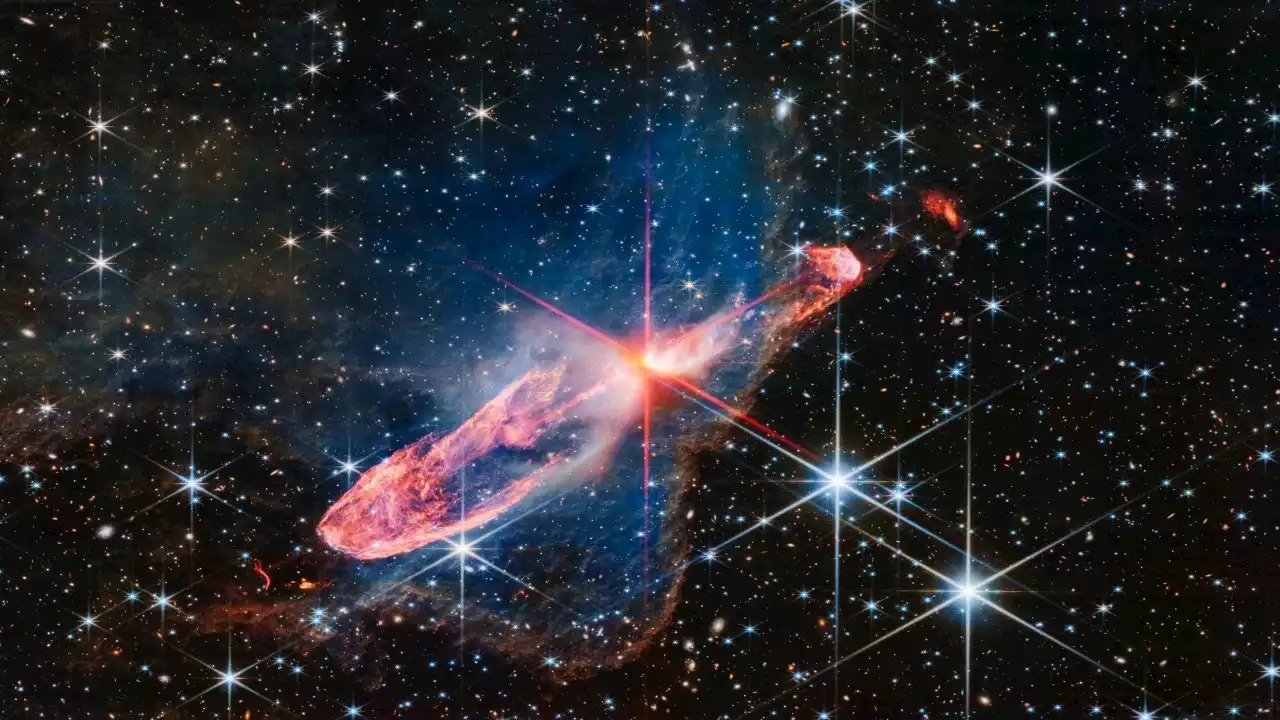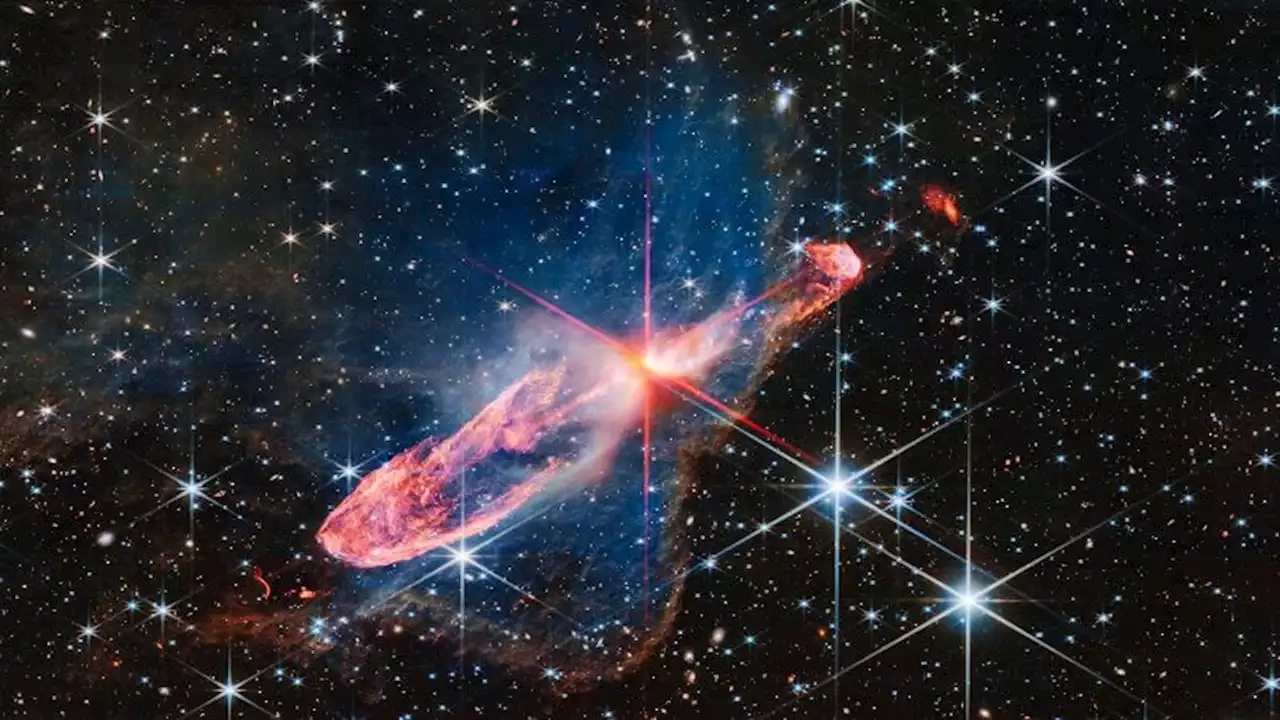When looking for answers in the cosmos, sometimes more questions appear.
on Wednesday offering the most detailed look yet at two actively forming young stars located 1,470 light-years from Earth in the Vela Constellation. In the image, the stars, named Herbig-Haro 46/47, are surrounded by a disk of material that"feeds" the stars as they grow for millions of years.
"It is probably a distant galaxy, or potentially interacting galaxies ," representatives of the Space Telescope Science Institute in Baltimore, which manages JWST's science operations, told Space.com.
South Africa Latest News, South Africa Headlines
Similar News:You can also read news stories similar to this one that we have collected from other news sources.
 Webb Space Telescope takes stunningly detailed infrared image of actively forming starsNASA's James Webb Space Telescope has taken a dazzling new image of a pair of forming young stars in high-resolution near-infrared light located 1,470 light-years away.
Webb Space Telescope takes stunningly detailed infrared image of actively forming starsNASA's James Webb Space Telescope has taken a dazzling new image of a pair of forming young stars in high-resolution near-infrared light located 1,470 light-years away.
Read more »
 Webb Space Telescope unlocks secrets of Jupiter's moonsUsing Webb, scientists have discovered elusive chemical compounds, each on a different Jovian moon, including one that's a common disinfectant.
Webb Space Telescope unlocks secrets of Jupiter's moonsUsing Webb, scientists have discovered elusive chemical compounds, each on a different Jovian moon, including one that's a common disinfectant.
Read more »
 James Webb telescope discovers water in nearby planetary systemAstronomers say they've discovered water vapor near an old star with a planet-creating disk. No planets were found to be forming near its inner disk.
James Webb telescope discovers water in nearby planetary systemAstronomers say they've discovered water vapor near an old star with a planet-creating disk. No planets were found to be forming near its inner disk.
Read more »
 James Webb telescope discovers water in planetary system near our ownAstronomers say they've discovered water vapor near an old star with a planet-creating disk. No planets were found to be forming near its inner disk. MORE ⬇️
James Webb telescope discovers water in planetary system near our ownAstronomers say they've discovered water vapor near an old star with a planet-creating disk. No planets were found to be forming near its inner disk. MORE ⬇️
Read more »
 Colorful new stars shine in latest Webb telescope image | CNNThe James Webb Space Telescope peered through cosmic gas and dust to spy a pair of actively forming stars and the colorful features they create in the process.
Colorful new stars shine in latest Webb telescope image | CNNThe James Webb Space Telescope peered through cosmic gas and dust to spy a pair of actively forming stars and the colorful features they create in the process.
Read more »
 Actively forming stars captured in stellar photo by Webb telescopeThe two stars still have a few million years to go before they are fully formed, according to NASA.
Actively forming stars captured in stellar photo by Webb telescopeThe two stars still have a few million years to go before they are fully formed, according to NASA.
Read more »
